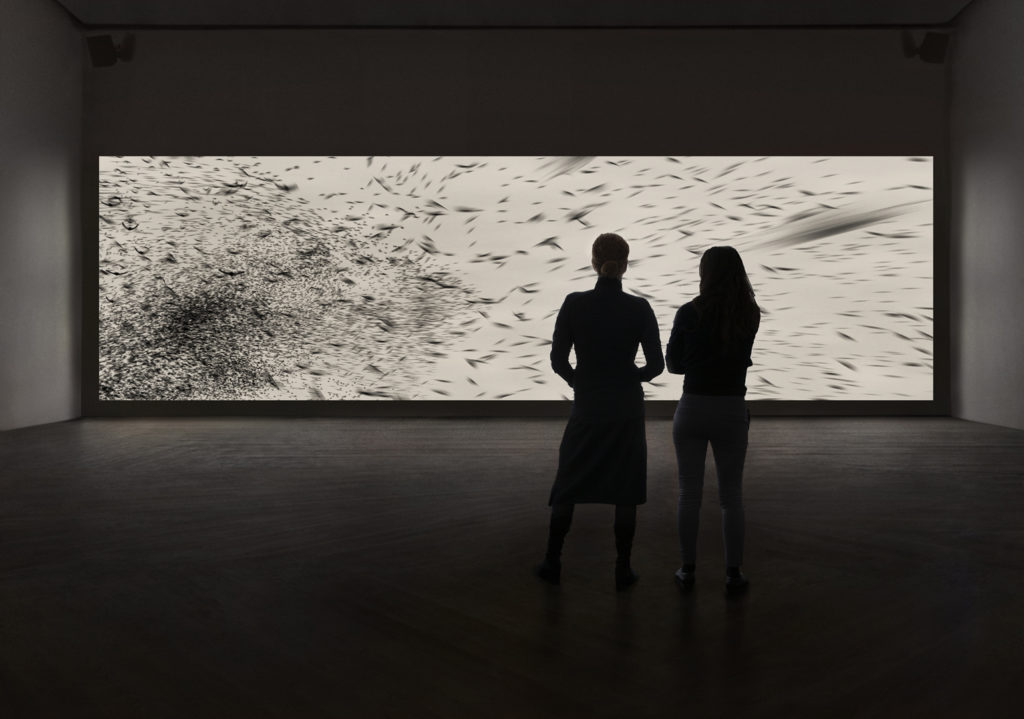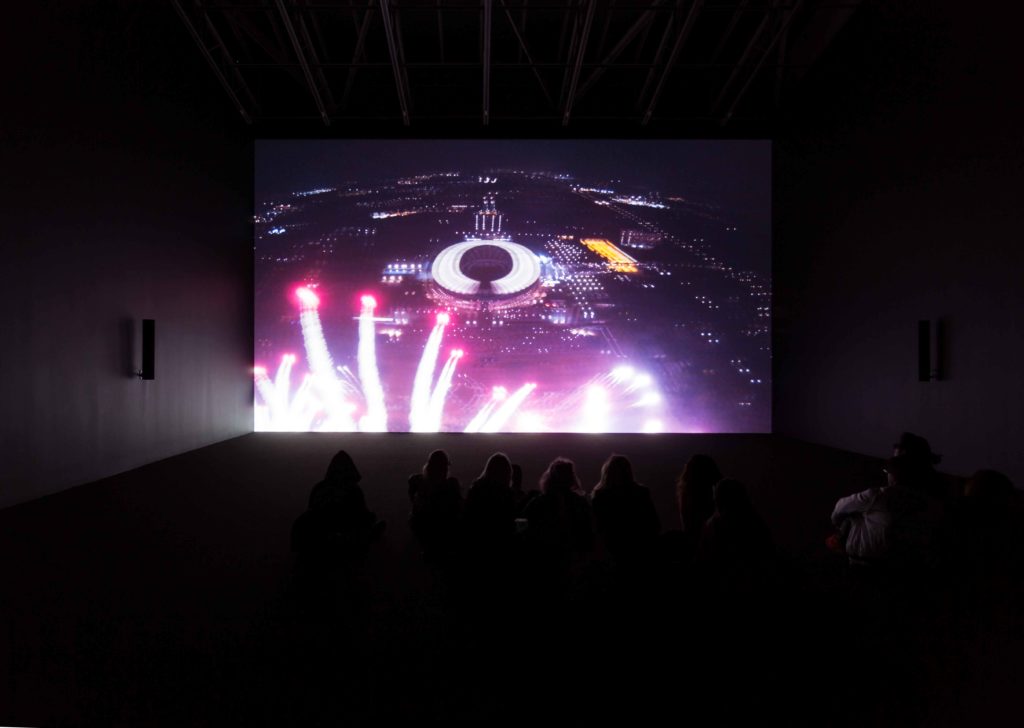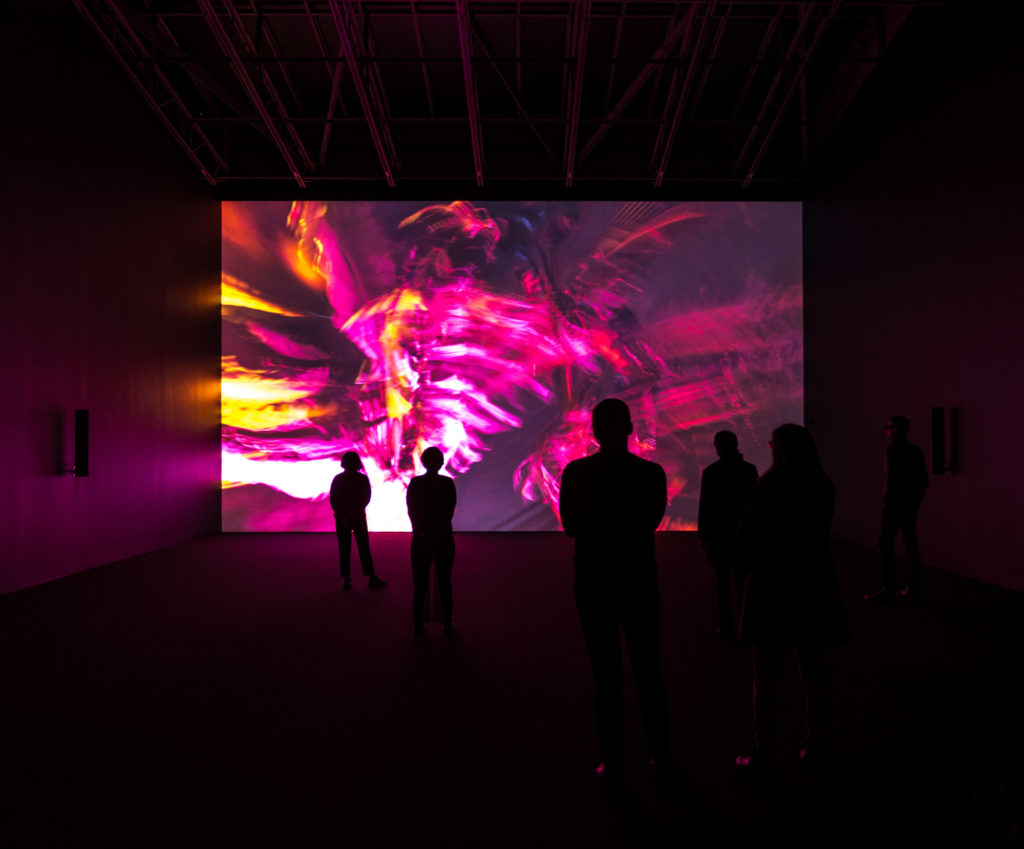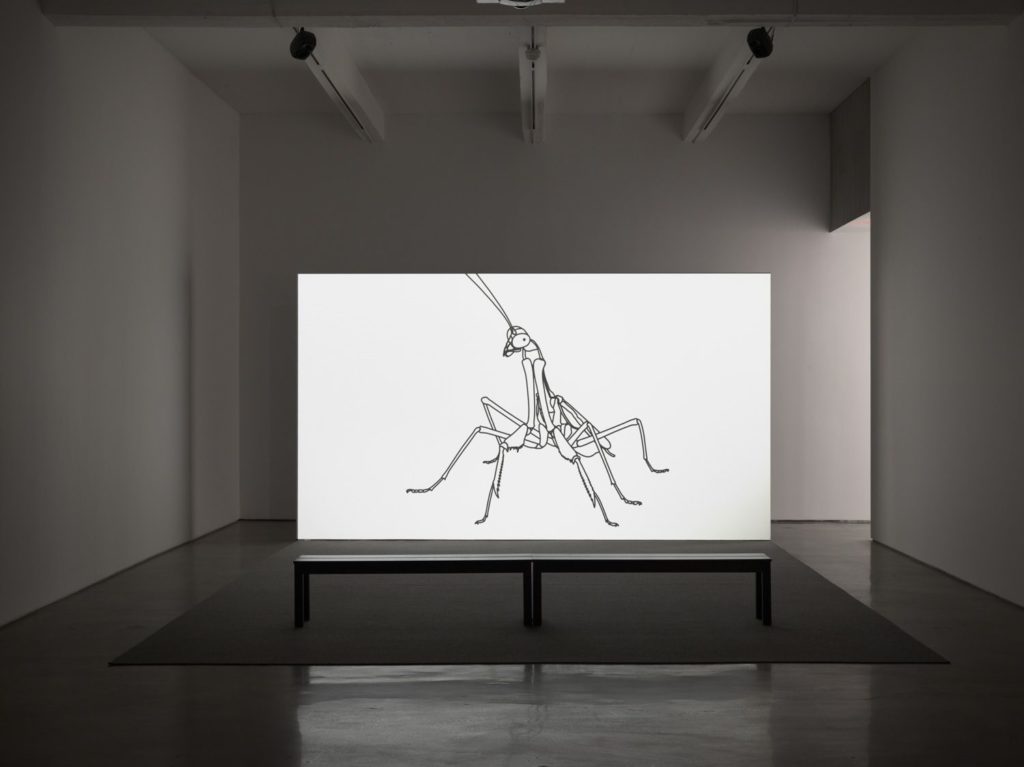At Gladstone Gallery, Cyprien Gaillard’s 3-D film Nightlife is a wonderfully immersive experience. Starting with Rodin’s The Thinker at the Cleveland Museum of Art, the film then moves to a series of plants and trees moving in slow motion in Los Angeles, followed by the annual Pyronale fireworks at the Olympiastadion in Berlin, and finally a return to Cleveland, where a helicopter lights up the site where Jesse Owens’ Olympic oak is planted. While the film plays, a dub song reverberates throughout the room on a loop, adding to the dreamlike atmosphere.
This exhibition closes 4/14/18.
At Metro Pictures is Oliver Laric’s two part exhibition, Year of the Dog. The video animation, the stronger part of the show, takes place in the main gallery.
From the press release–
The animation continues his inquiry into concepts of metamorphosis, encompassing concerns about time and the complex dynamic between human and nonhuman lifeforms. Against a white background, linear animations of fish, fungi, and other figures move and change shape. The lines composing the animations continually extend or contract to zoom in on greater and greater detail, magnifying a sense of time as the images change. While the shapes and figures, as in his previous video works, are drawn from cartoons and Japanese anime, Laric’s subject matter has grown to also include animations based on live footage. He constructed the animation via an exacting technique in which each line moves continually between sequences—in contrast with traditional techniques in which each sequence consists of a series of redrawn frames. As the shapes perpetually transform, an atmospheric soundtrack commissioned from musician Ville Haimala establishes the sense of an unfolding narrative.
In the back gallery are three resin sculptures of a human dog hybrid holding a smaller dog in its arms, titled Hundemensch. Each sculpture is from the same mold but differs in opacity and color.
This exhibition closes 4/14/18.

Desiree Dolron, Complex Systems (2017)- Image via GRIMM
Finally if you are on the Lower East Side, near the ICP Museum and the New Museum is GRIMM gallery, which is currently showing Desiree Dolron’s video, Complex Systems (2017). Her digital illustrations of the movements of starlings are made more intense by the unnatural patterns she includes, and the sounds that accompany the piece.
From the press release–
Complex Systems displays a digitally drawn flock of starlings, scattering throughout the sky in a loop of ever-changing patterns. In this work themes such as the fragility of existence, impermanence and the dichotomy between the individual and the collective form the conceptual ground of her inquiry. The title of the film is adopted from the scientific field of network research, which employs the term to define the complex interactions between different components of the same group.
The shapes assumed by the birds are proven to be the result of a defense mechanism system: in order to avoid attack by predators, a singular starling keeps track of seven others simultaneously – in doing so, the starling is able to adapt to the changing flying directions of the entire flock, thus keeping the collective intact. The dichotomy between the individual and the collective is at the core of Dolron’s interest in this natural phenomenon. Complex Systems investigates the relation between singular and shared intelligence, prompting questions concerning humanity, the psyche and the possible presence of a collective unconscious.
The link to the human psyche is emphasized by the cyclical character of the film; Dolron underlines the full turn of life in which the starlings function as a metaphor. Their movements change from an initial drive to a final, slow fall, while the murmuration happens in an eternal loop that symbolizes the cycle of life and its fragility. The movements of the starlings, combined with the pivotal soundtrack of murmuring voices that intensify and fade according to the flock’s movements, allude to the human mind in a state of constant flux.



